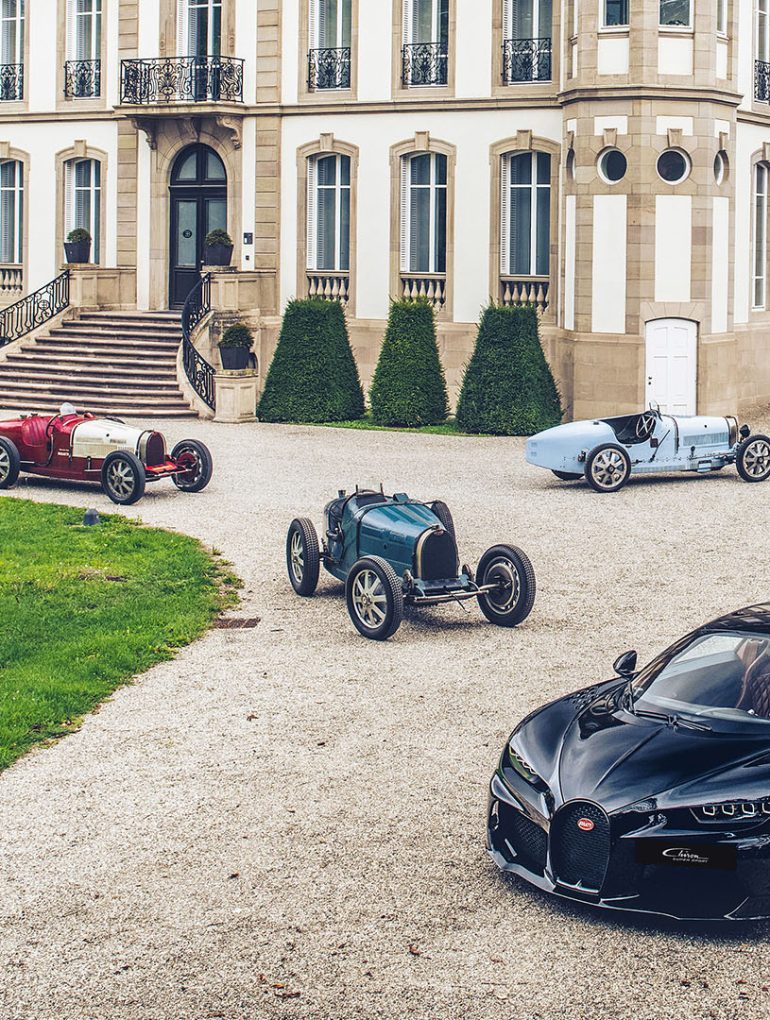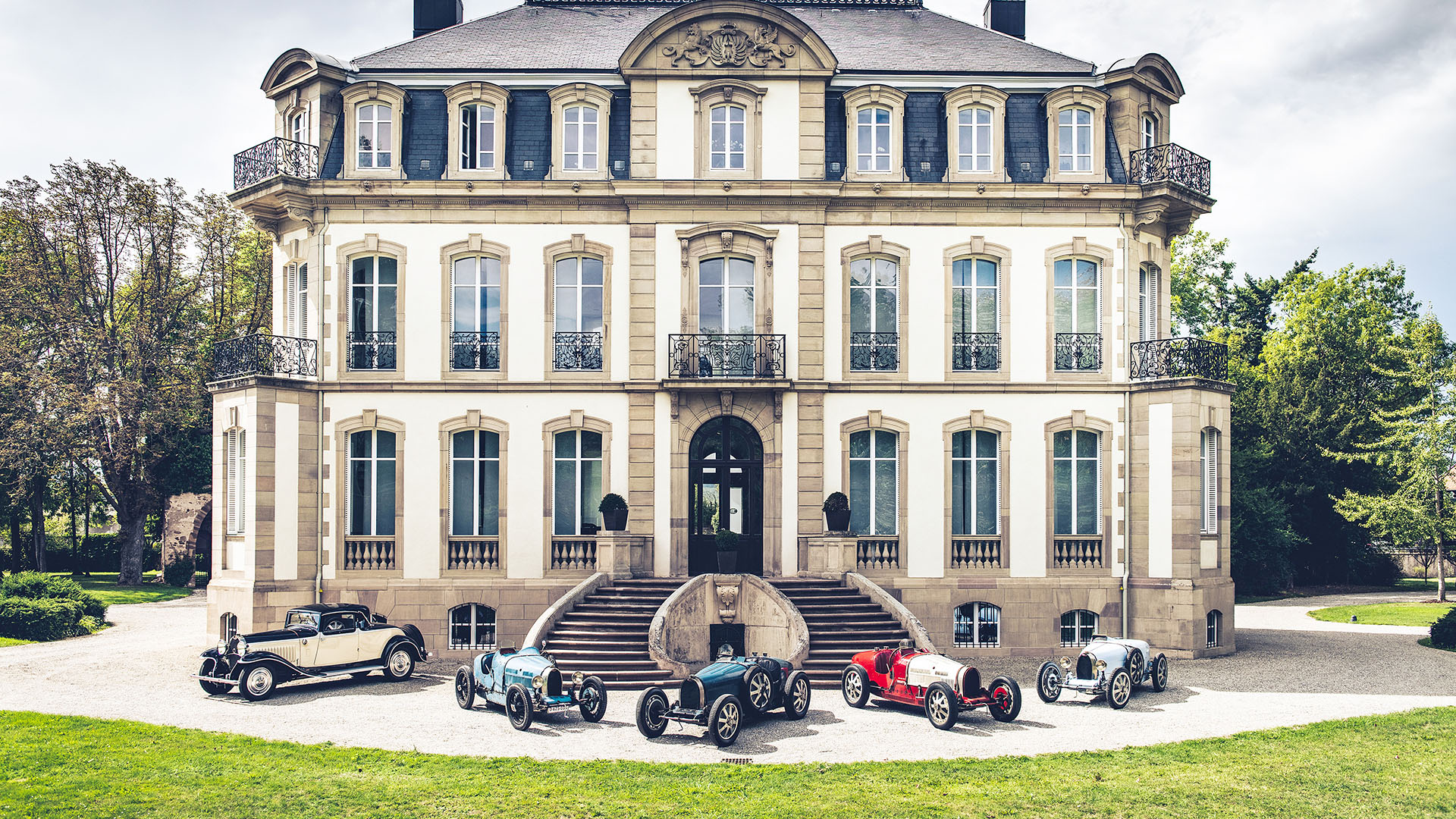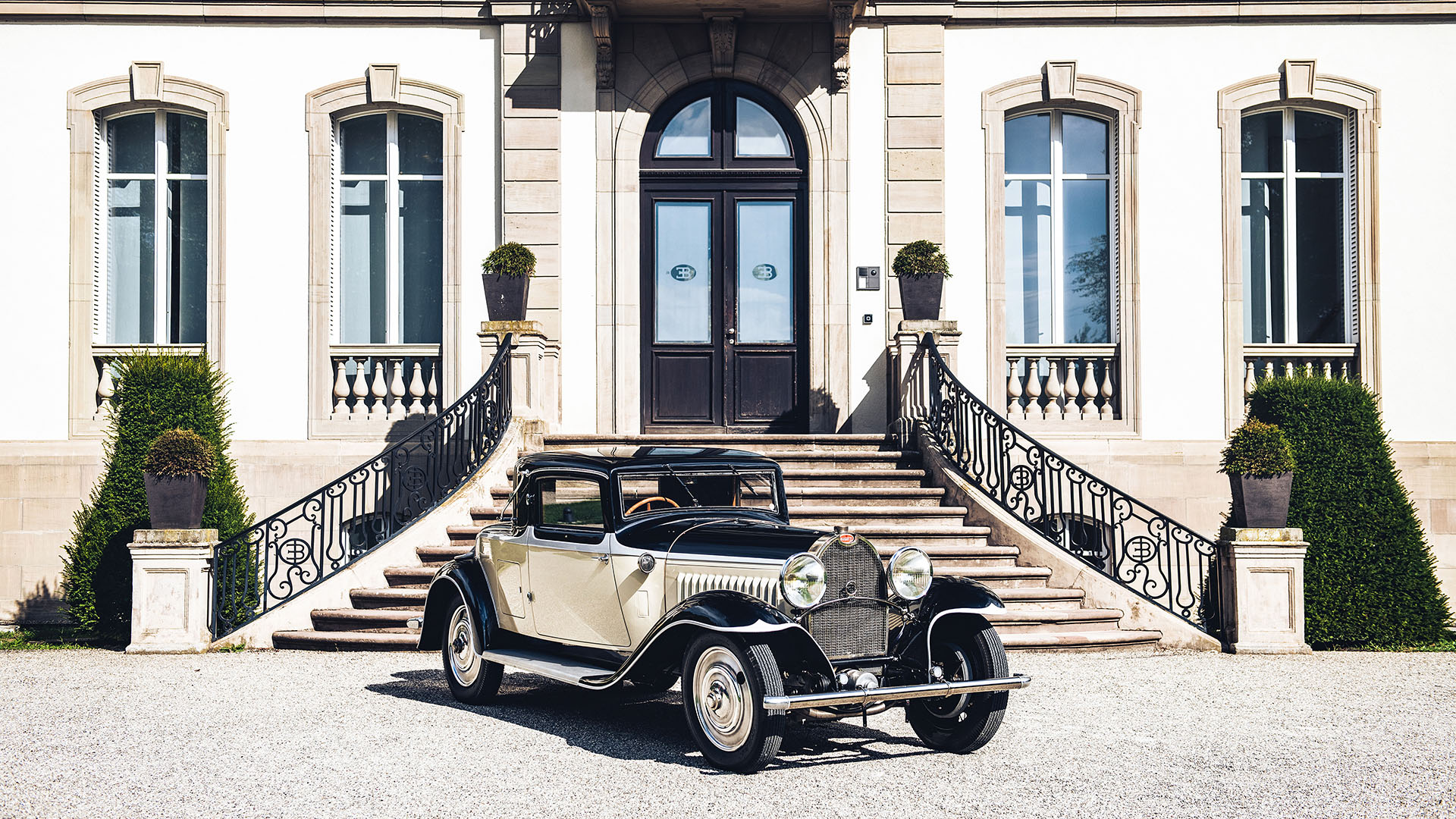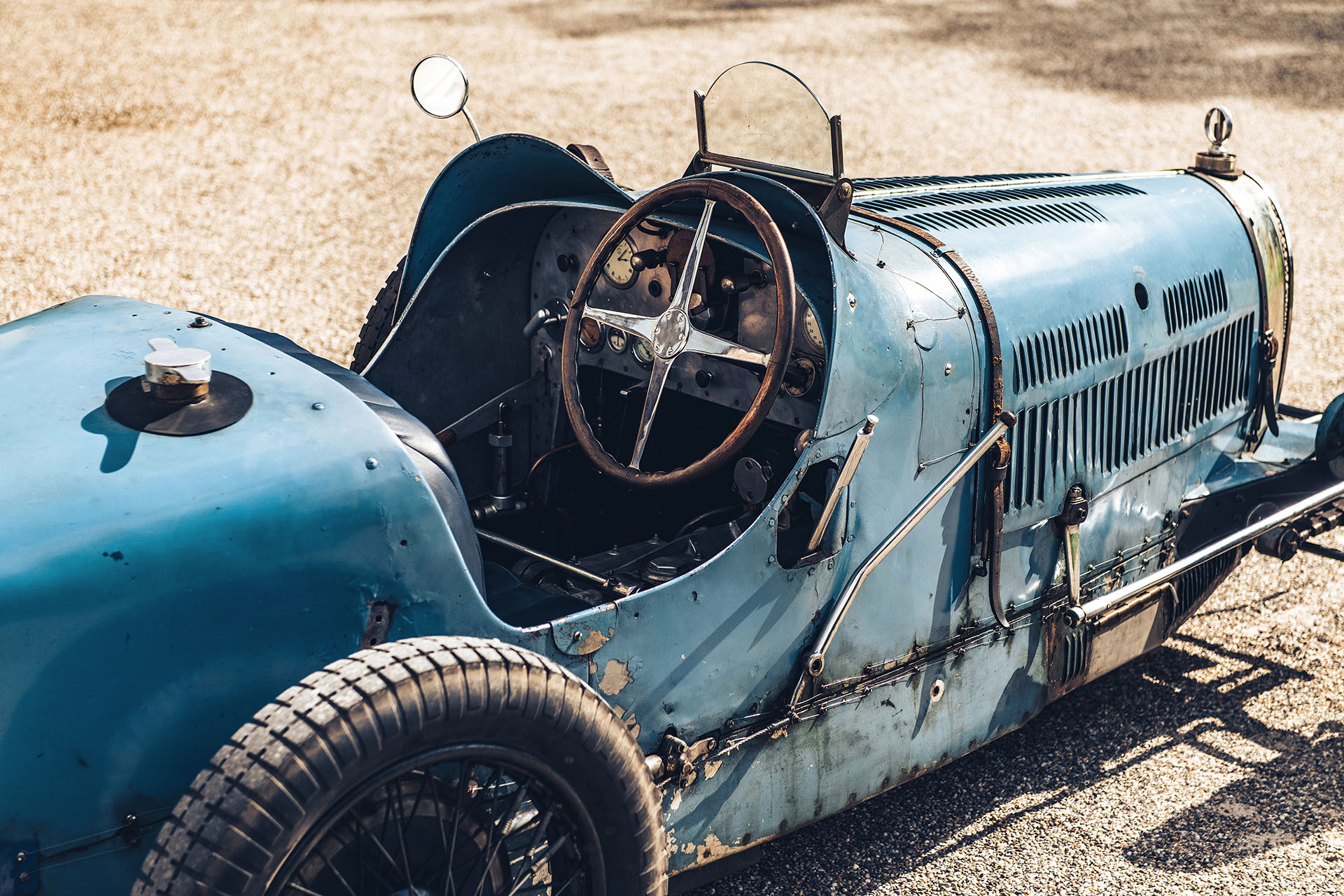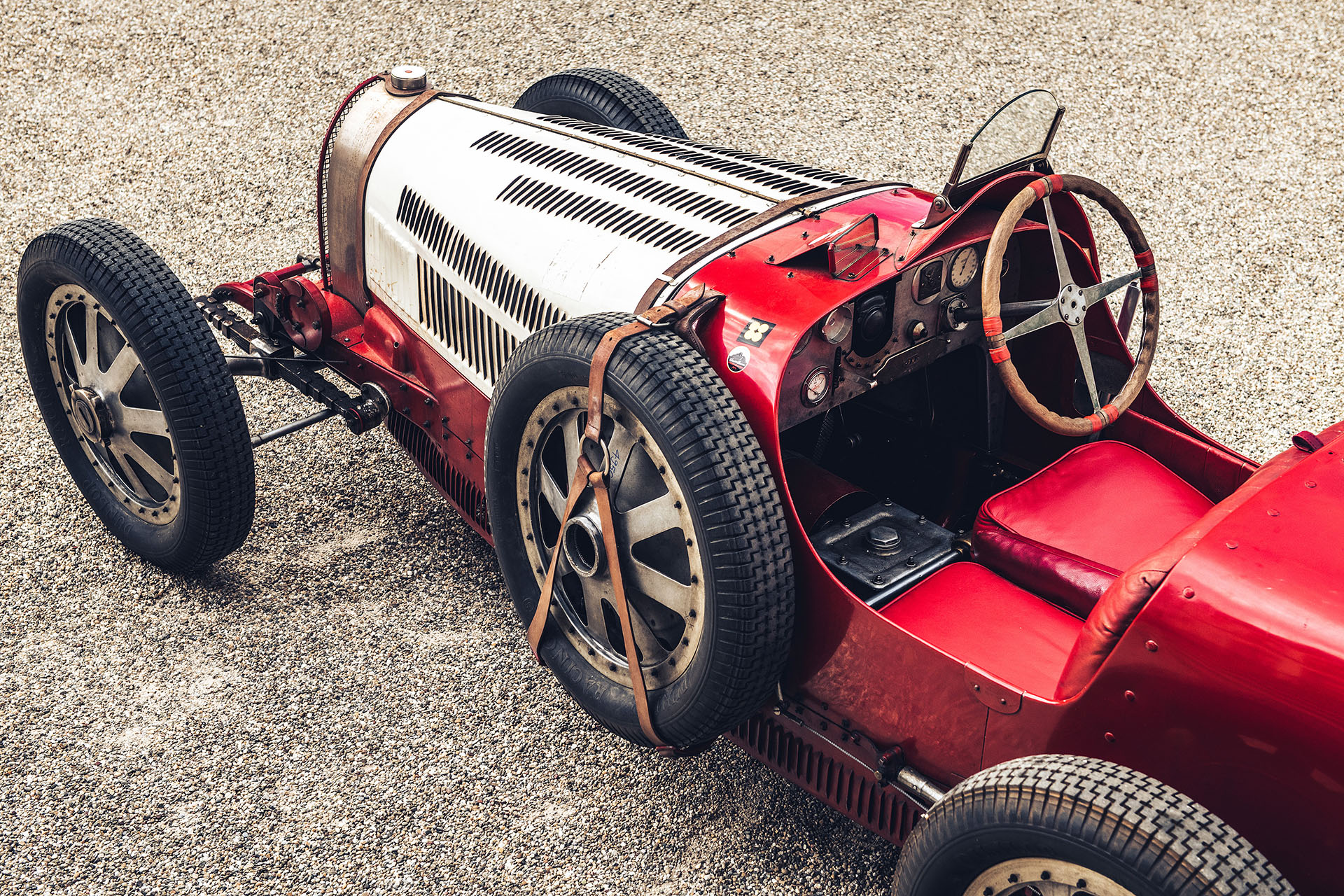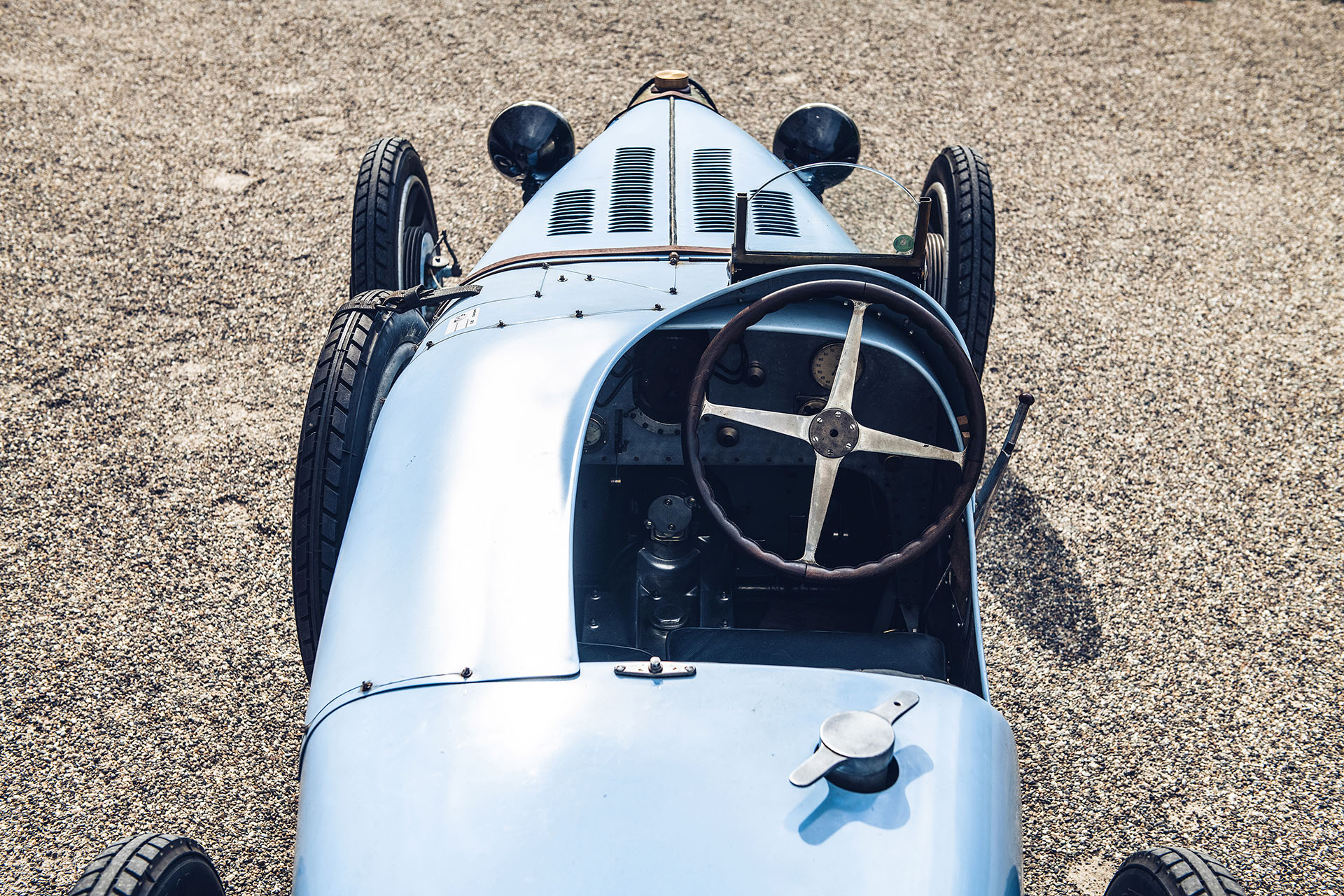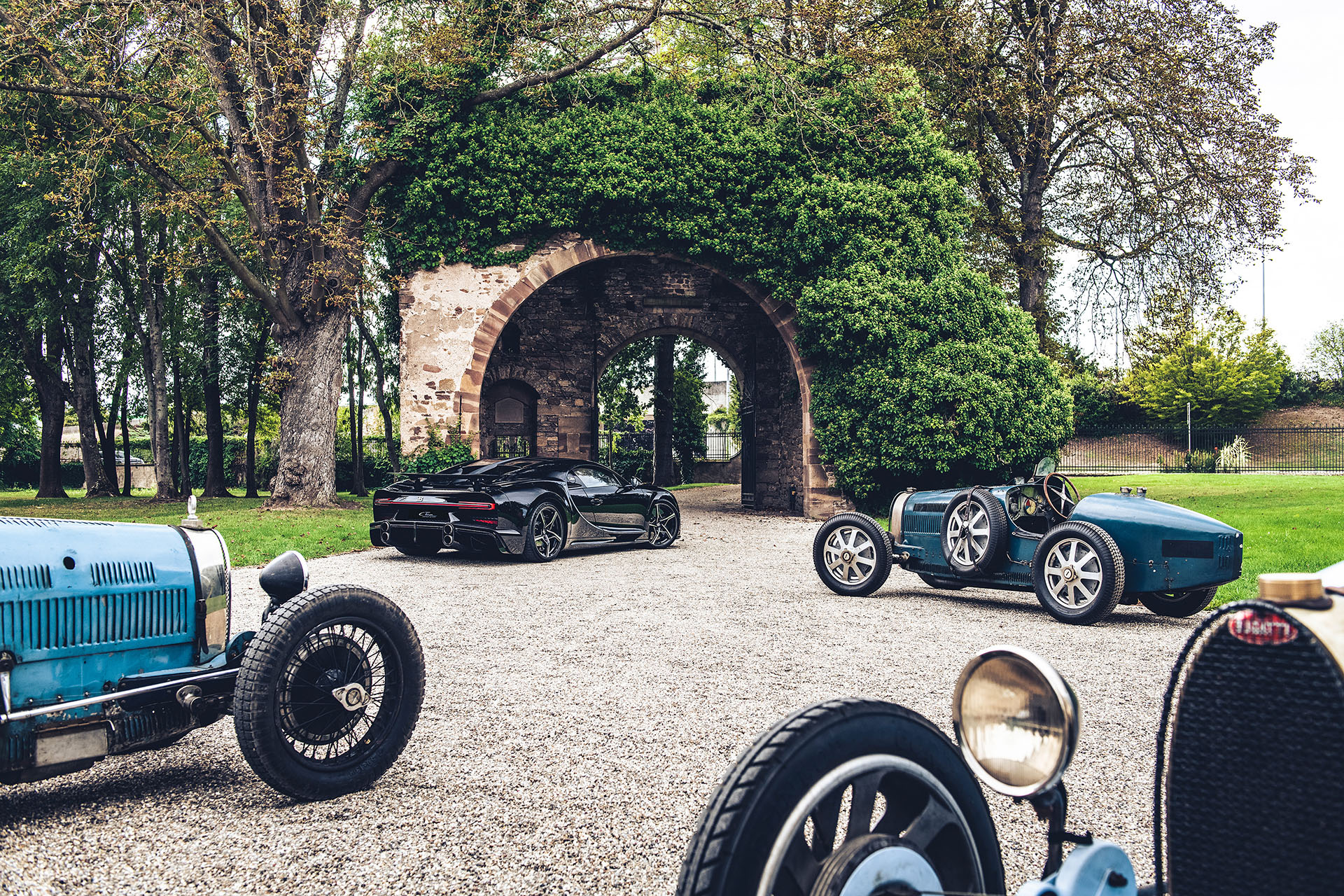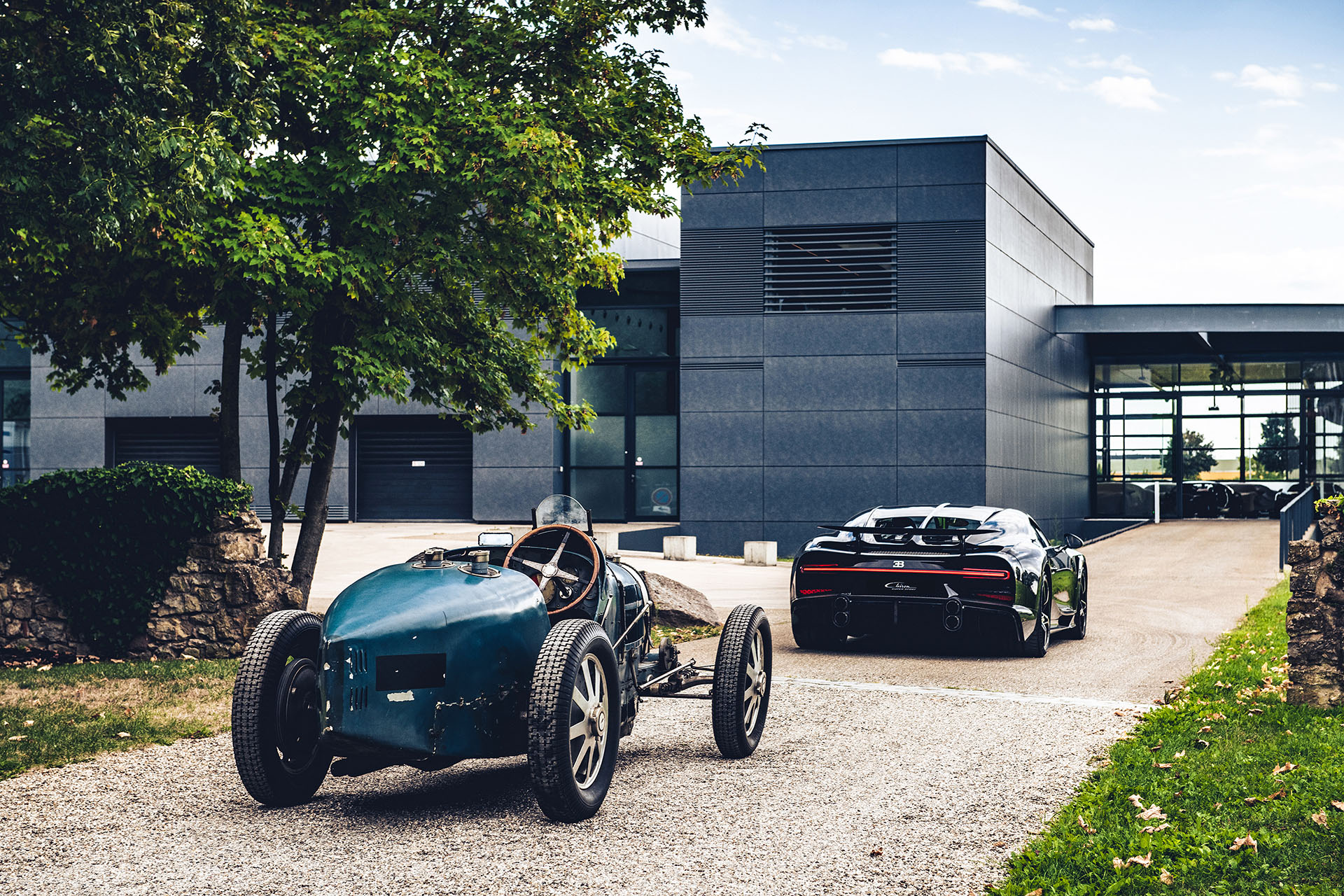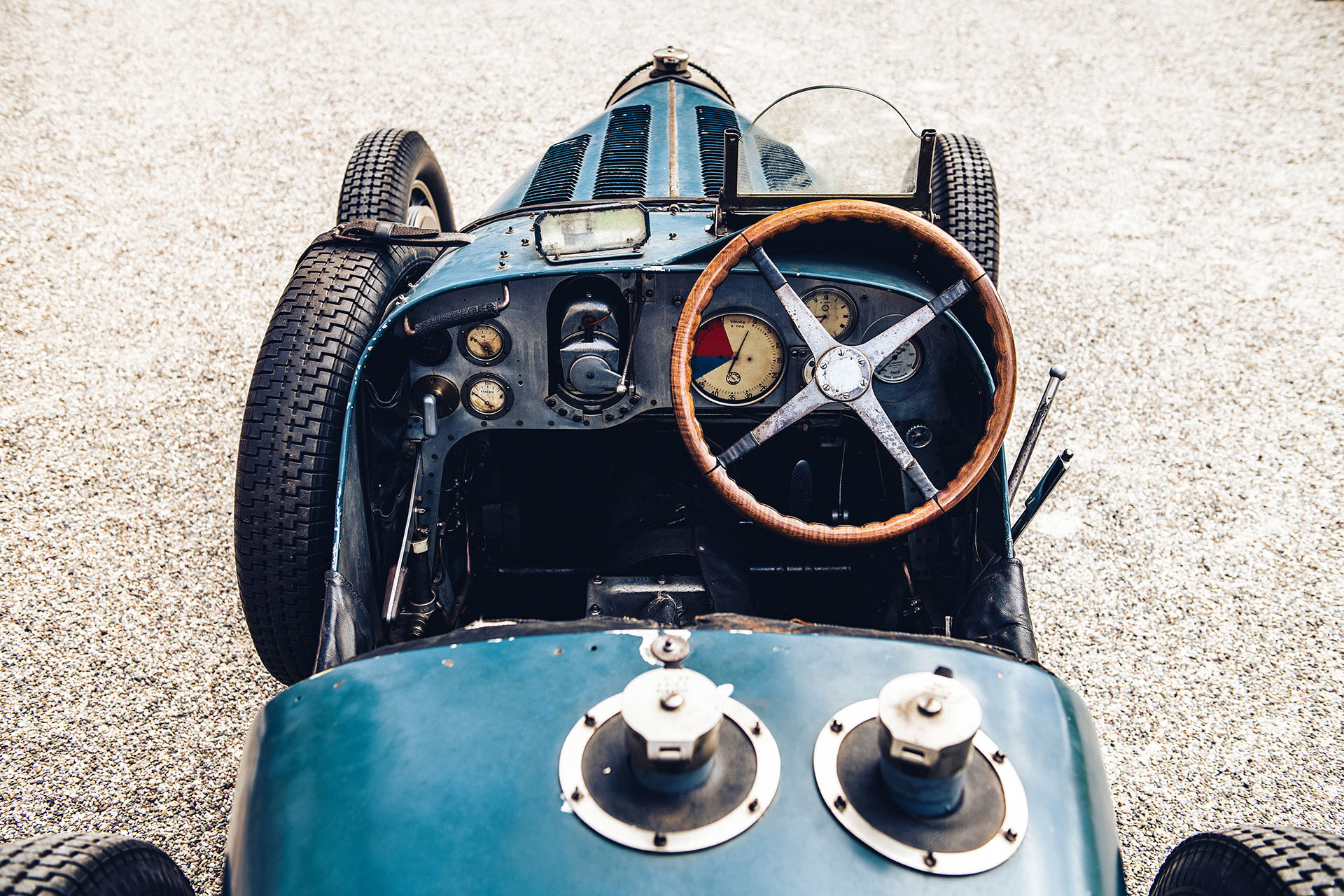For years a collection of the most extraordinary unrestored Bugatti cars has sat, meticulously cared for and researched, in a sprawling house in Switzerland. But now this collection, lovingly built up over decades by Hans Matti, has found a new custodian, and the cars’ first journey under their new ownership took them to Château Saint Jean in Molsheim – the home of Bugatti Automobiles.
To have these cars returning ‘home’, just a stone’s throw from where they were originally created is a fitting beginning for the latest chapter in these cars’ lives. Hans Matti dedicated his life to building this collection, gathering original photographs, magazine features, books and factory communications relating to them. He hadn’t just collected the cars, but he had completely researched their stories. As the Registrar of the Bugatti Club Suisse, he is one of the most knowledgeable experts in the world on Bugatti Grand Prix cars.
Among the extraordinary collection is Bugatti Type 51, thought to be one of the most original in existence, a remarkably preserved Type 37A, a short chassis Type 49 Faux cabriolet with Jean Bugatti coachwork – the only remaining example in the world, a Type 35B and a Type 35A fitted with the only existing Type 36 engine, gearbox and rear axle to have survived. It’s a once-in-a-lifetime collection that Hans Matti was understandably reluctant to part with. Discussions to acquire the collection had been underway for two-and-a-half years and even Caroline Bugatti – granddaughter of Ettore Bugatti had been involved in the negotiations.
The Type 51 – a dedicated factory Grand Prix racing machine – has never been restored or repainted, bearing the marks of nine decades of motorsport and enjoyment. The original craftsmanship of Ettore Bugatti’s team is on display and each chapter of its life is worn with pride. The Type 49, meanwhile, was the personal car of Jean Bugatti himself, with the initials ‘JB’ on the doors. It’s extremely rare to have a Type 49 with a body designed and built by the Bugatti factory, as this example does, and no other Type 49 in existence wears the unique Faux Cabriolet body. More incredible still, this Type 51 and Type 49 shared a transporter during their delivery to their respective first private customers. To have them reunited is the closing of a circle that started all the way back in the 1930s.
The Type 51 in the collection began life as one of the last Type 35Bs to ever be built, a factory Grand Prix racer, driven in period by Louis Chiron, who gave his name to Bugatti’s latest hyper sports car. As Bugatti looked to evolve the Type 35 – renowned as the most successful racing car of all time – it developed a new advanced twin-cam engine and a new car which it would power: the Type 51. This new powertrain was swapped into this car, at which point it became one of the very first Type 51s, fitted with engine number 1 and raced by Achille Varzi and other contemporary motorsport heroes. Varzi is revered to this day at Bugatti; to celebrate 100 years of the brand a special Centenaire Edition Veyron ‘Achille Varzi’ was revealed. With appearances at races in Monaco, Monza, at the Targa Florio and more, this car has an incredible racing pedigree. In another important connection, the factory Grand Prix engine that was originally in this car as a Type 35B was swapped into another Type 35B in this collection by the factory, before later being sold as a new car.
One of the stand-out circuits of the early racing era was the Montlhéry track in France, renowned for its high-speed banking but also for its extraordinarily bumpy surface. Bugatti’s meticulously detailed approach to engineering saw them develop a new model to race at Montlhéry: the Type 36. Featuring a rigid rear axle, it would better handle the demanding conditions of this unique circuit. Two variants were built, the later model with a supercharger, becoming what many believe to be the first ever supercharged Bugatti. But their racing careers were short-lived and the only two Type 36 cars built were destroyed. All that remained was the engine, gearbox and rear axle of one of them, which now uniquely reside within a Type 35A body housed in this collection. Once more, it is another one-off piece of Bugatti history.
Completing the five Bugatti cars in the collection is a Type 37A, one of a long lineage of supercharged Bugatti cars that arguably began with the Type 36. It is again preserved in fully original condition with matching numbers – each era of its ownership and extensive racing history has been meticulously traced right back to its first owner in 1929 and it continues to race to this day. The Type 37 was considered a Voiturette class winning car by many of its drivers, but with the addition of a supercharger – becoming the Type 37A – its powerful four-cylinder engine became capable of propelling the car to more than 120mph (193kph), up from 90mph (144kph). Only 76 were supercharged by Bugatti, and they went on to race at Le Mans, the Mille Miglia, the Targa Florio and more.
This unique collection of cars now embarks on its third era; their first being when they were sold new and their second under the meticulous care of Hans Matti. Now, they will be kept in their original, unrestored condition, preserved as the important artefacts of Bugatti history that they are. And as they gathered at the Château Saint Jean – a place bought by Ettore Bugatti to entertain his customers, and still a core part of the Bugatti legend – it almost felt as though the cars had never left. A sense of history surrounds the Château, brimming with nearly a century of Bugatti heritage.
Christophe Piochon, President of Bugatti Automobiles, said: “We are a brand that constantly looks to the genius of our founder for inspiration. For Ettore, the most important aspect of a Bugatti was that it be incomparable. It should be in a class of its own. Arguably nothing brings us closer to vision of Ettore than seeing his creations in the condition they left the factory in; the original rivets, paint, and, in particular, the meticulous engineering that came to define his cars and ultimately his success. This collection of cars and the stories that have been gathered around them are absolutely priceless, and we’re honored to have been able to welcome them to home of Bugatti Automobiles. As we look to a new era of Bugatti, it’s pioneering models like these that will be our inspiration.”


